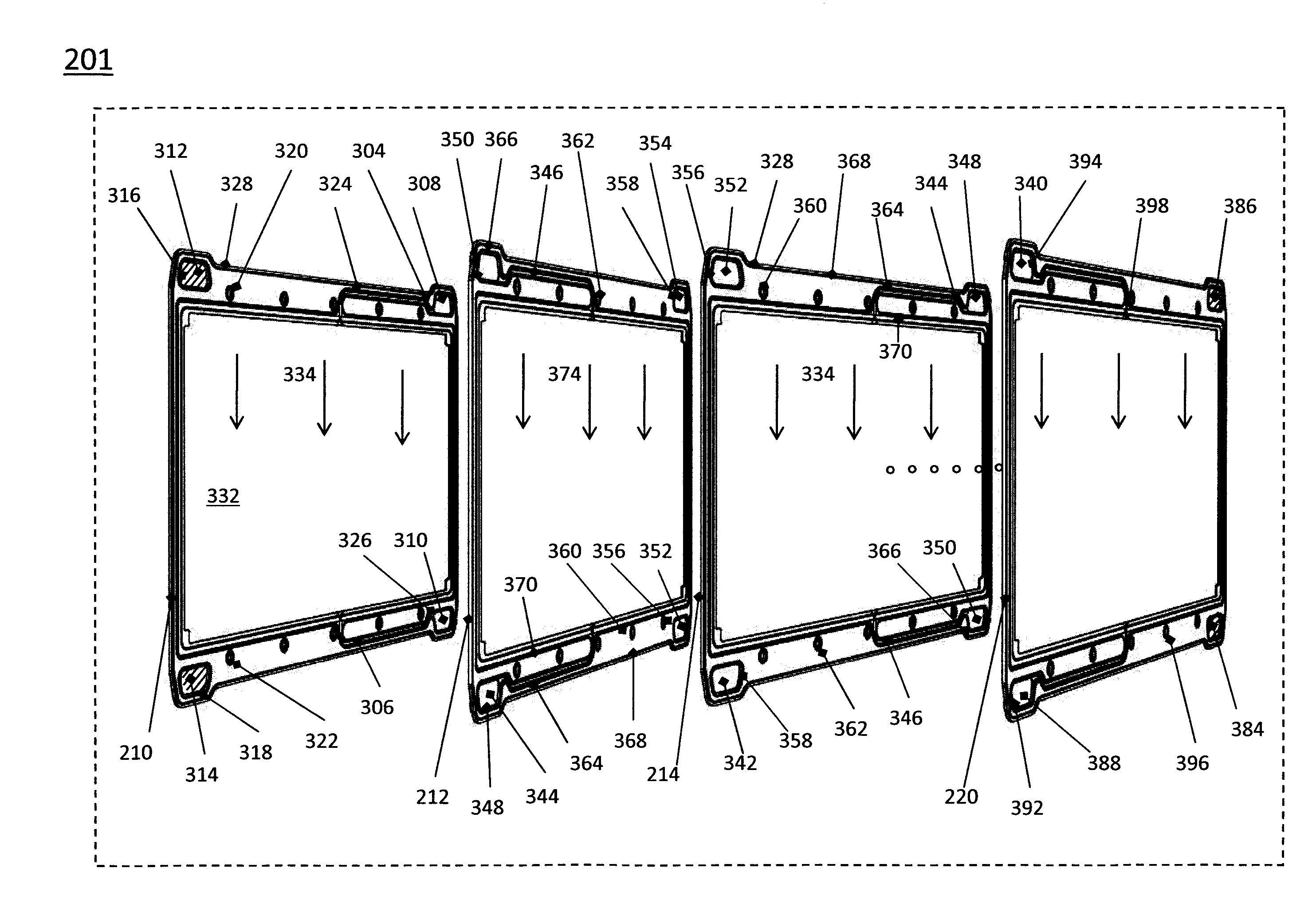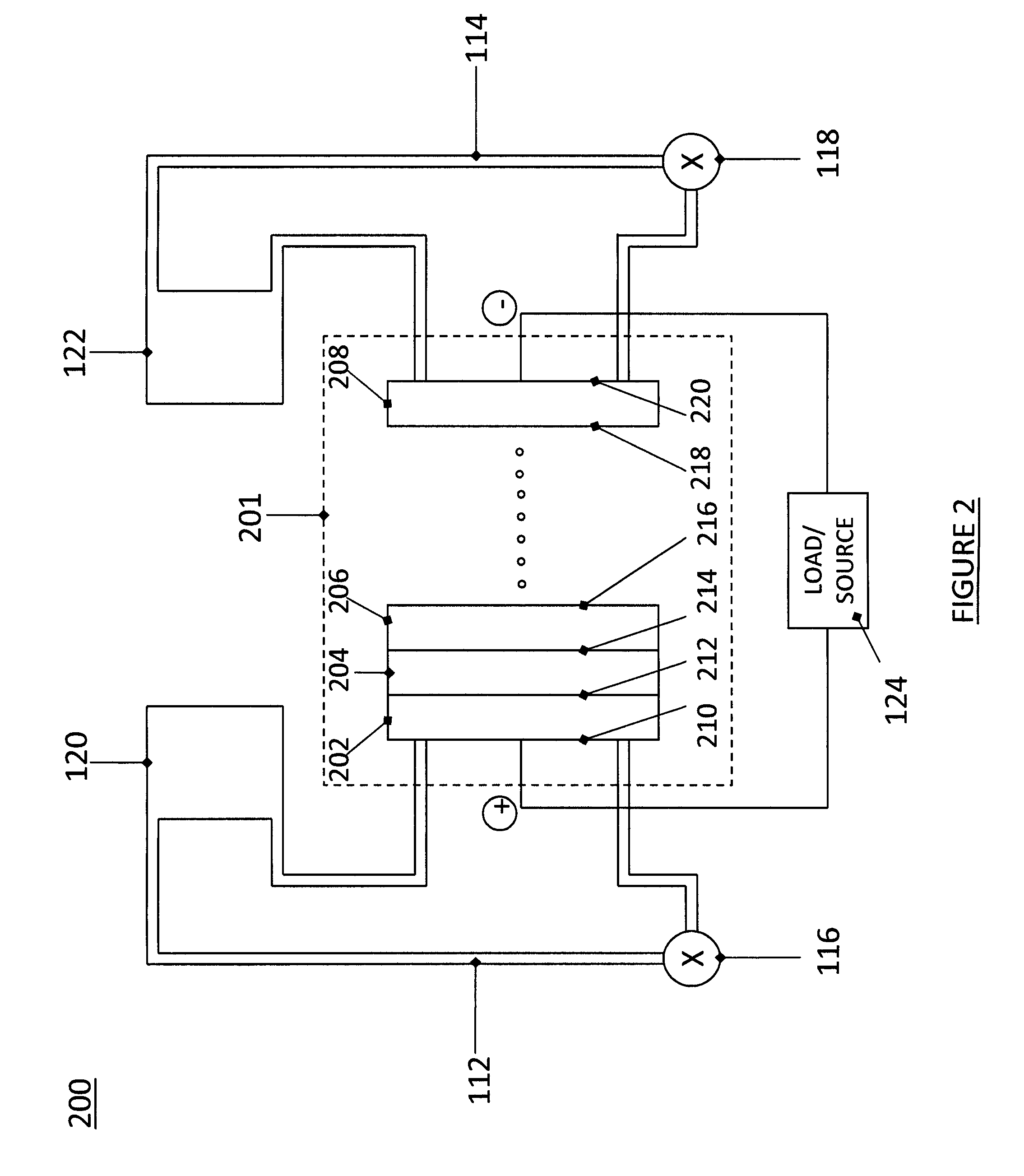Common Module Stack Component Design
a technology of common modules and components, applied in the direction of cell components, indirect fuel cells, electrochemical generators, etc., can solve the problems of intermittent power availability, adverse effects of electricity on many devices, and the use of flow batteries as uninterruptible power supplies
- Summary
- Abstract
- Description
- Claims
- Application Information
AI Technical Summary
Problems solved by technology
Method used
Image
Examples
Embodiment Construction
[0021]A flow cell is the minimal component of a flow battery. Multiple flow cells can be coupled (e.g., “stacked”) to form a multi-cell battery. The cell includes two half-cells, each with an electrode, separated by a membrane, through which ions are transferred during a reduction-oxidation (redox) reaction. One half-cell contains the anolyte and the other half-cell contains the catholyte. The electrolytes (i.e., anolyte and catholyte) are flowed through the half-cells, often with an external pumping system. Electrodes in each half cell provide surfaces on which the redox reaction takes place and from which charge is transferred.
[0022]FIG. 1 illustrates a flow cell 100 consistent with some embodiments of the present invention. Flow cell 100 includes two half-cells 102 and 104 separated by an ion exchange membrane (IEM) 106. Half-cells 102 and 104 include electrodes 108 and 110, respectively, in contact with an electrolyte 130 and 132, respectively, such that an anodic reaction occur...
PUM
| Property | Measurement | Unit |
|---|---|---|
| rotation | aaaaa | aaaaa |
| surface feature | aaaaa | aaaaa |
| electrical energy | aaaaa | aaaaa |
Abstract
Description
Claims
Application Information
 Login to View More
Login to View More - R&D
- Intellectual Property
- Life Sciences
- Materials
- Tech Scout
- Unparalleled Data Quality
- Higher Quality Content
- 60% Fewer Hallucinations
Browse by: Latest US Patents, China's latest patents, Technical Efficacy Thesaurus, Application Domain, Technology Topic, Popular Technical Reports.
© 2025 PatSnap. All rights reserved.Legal|Privacy policy|Modern Slavery Act Transparency Statement|Sitemap|About US| Contact US: help@patsnap.com



